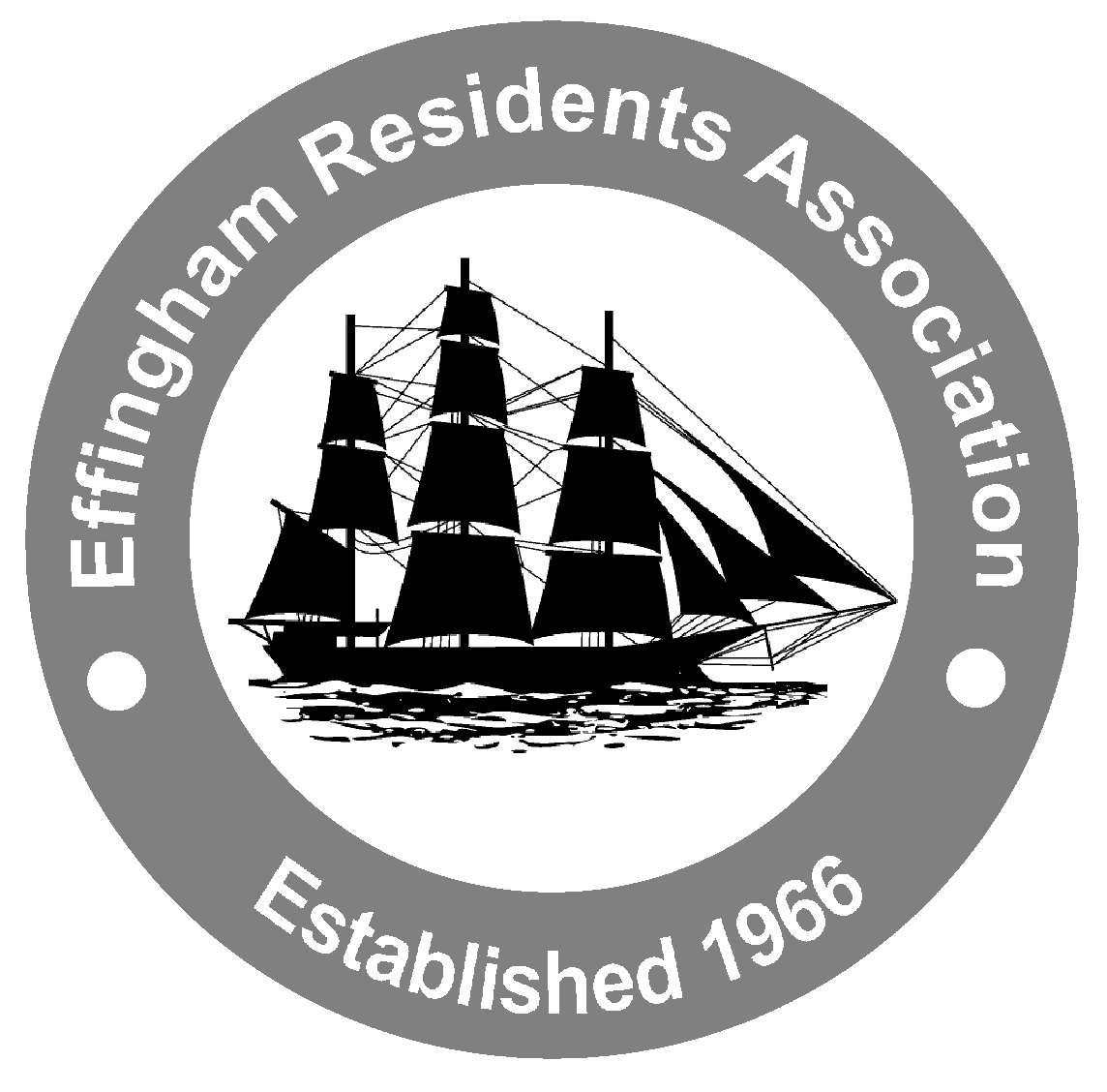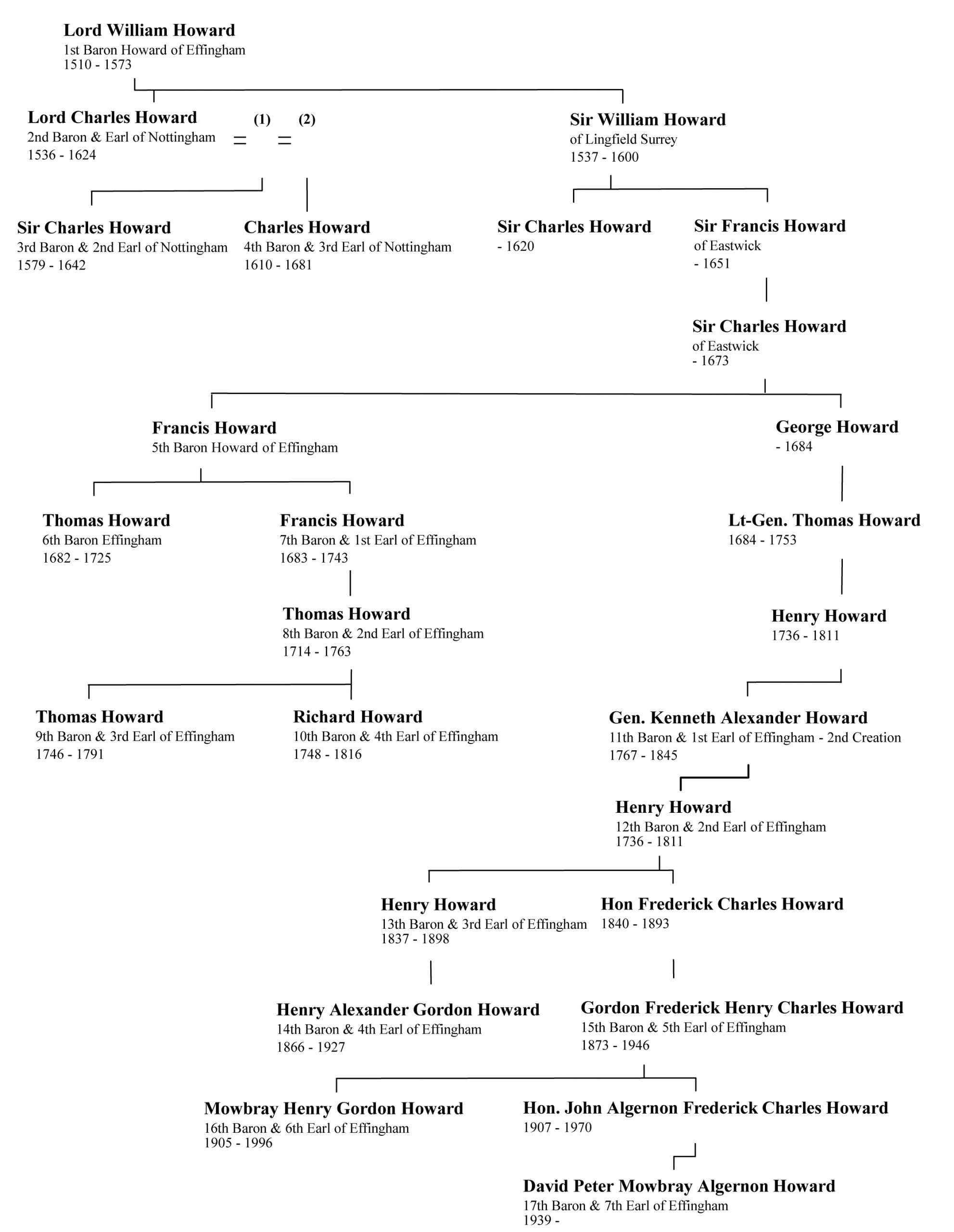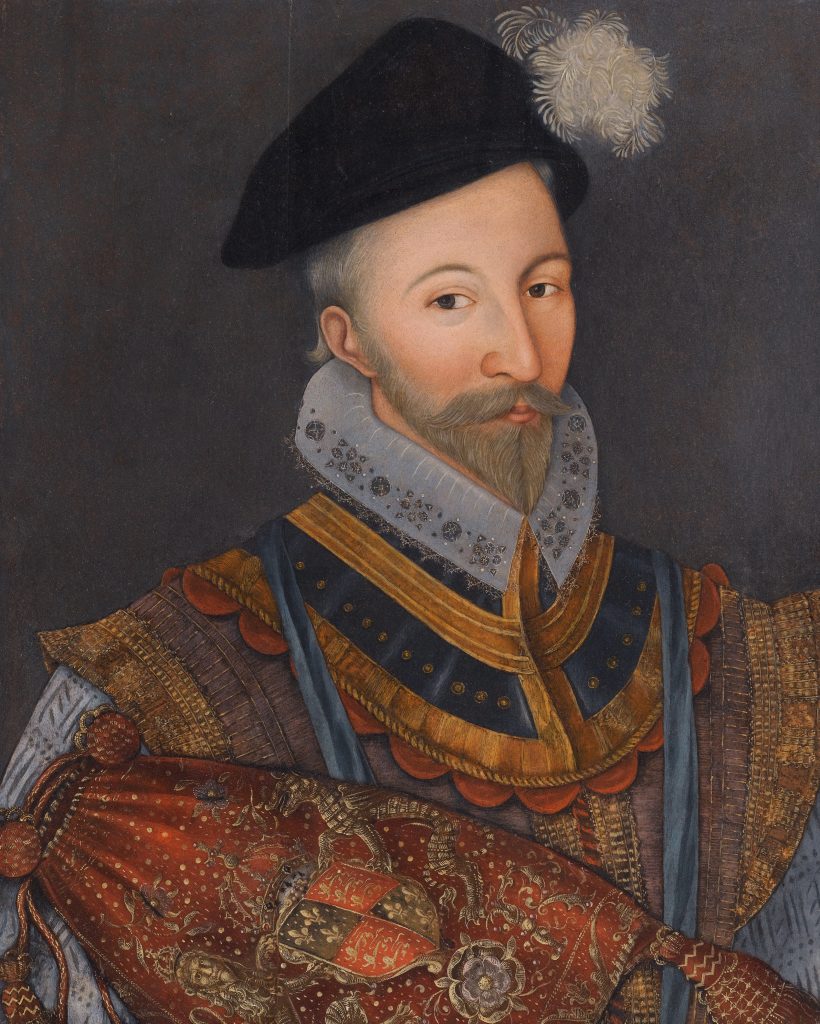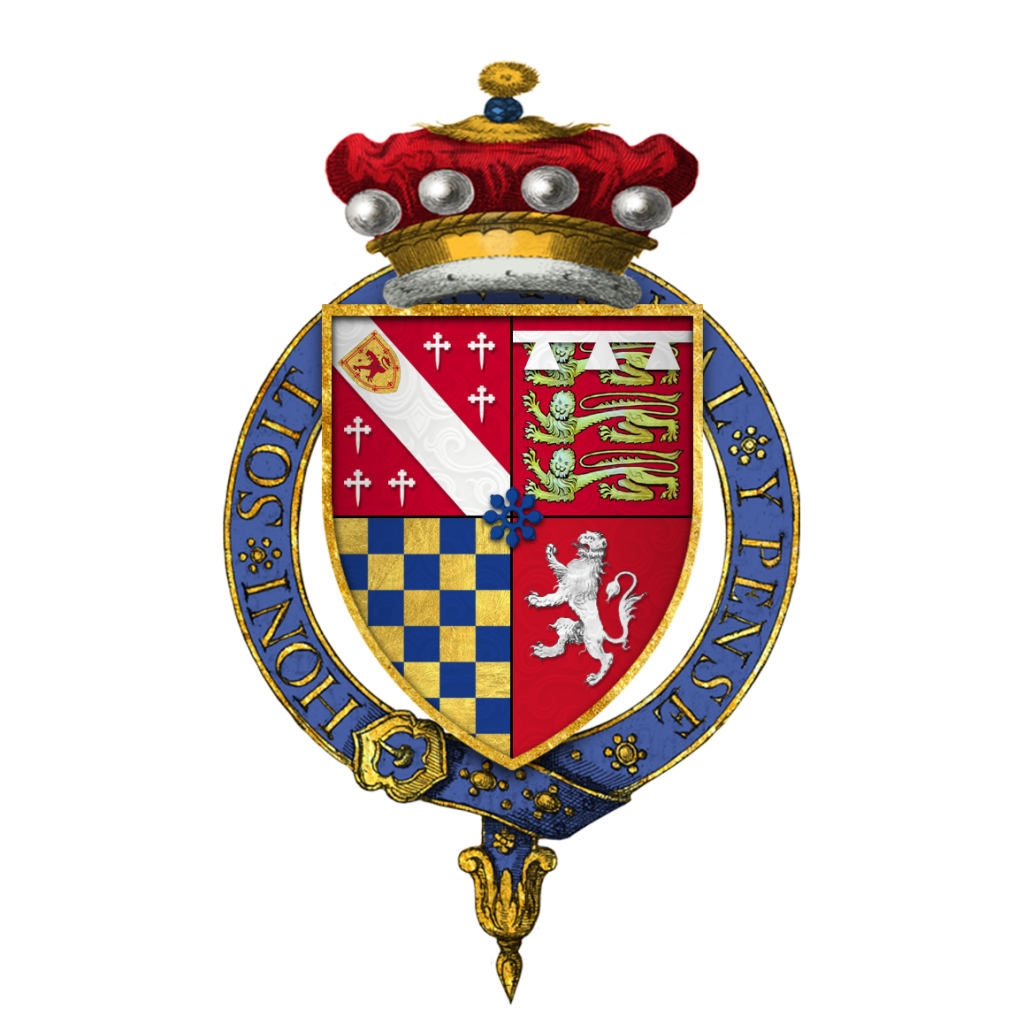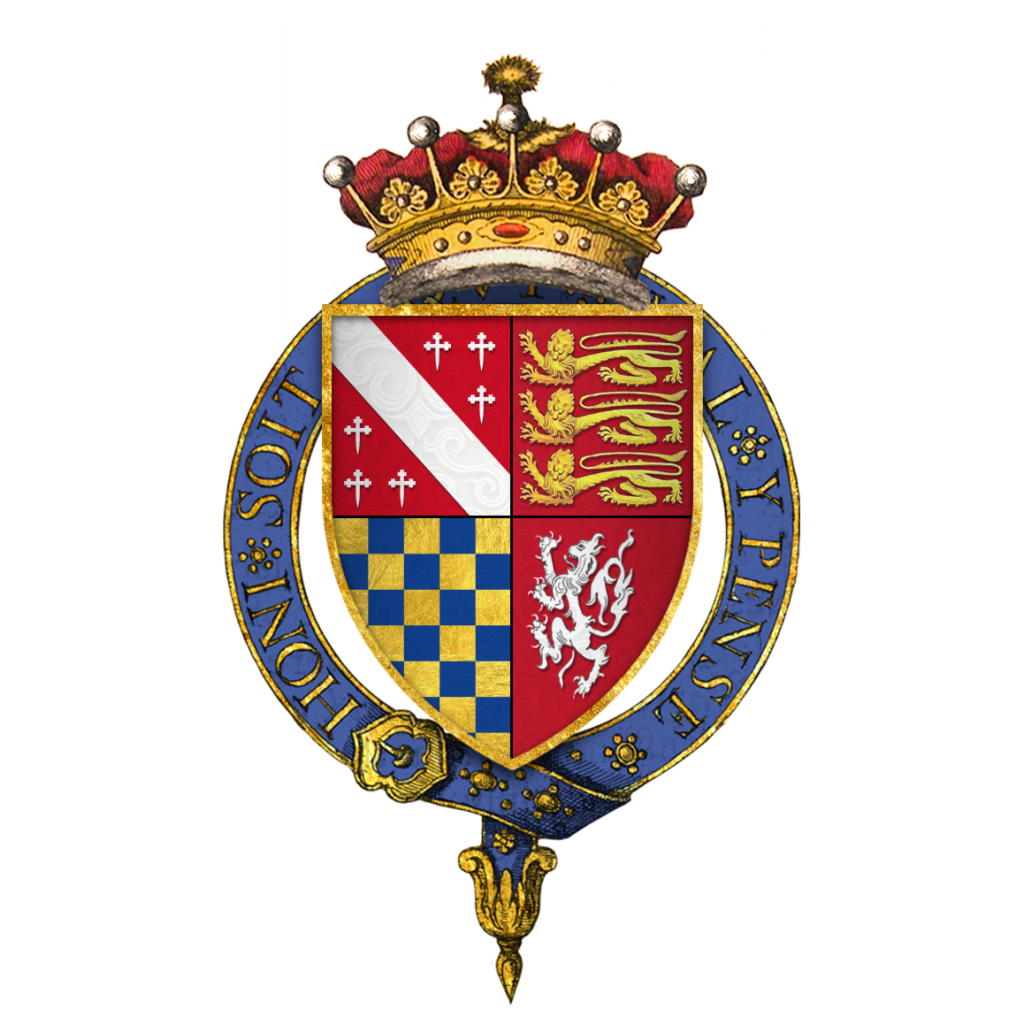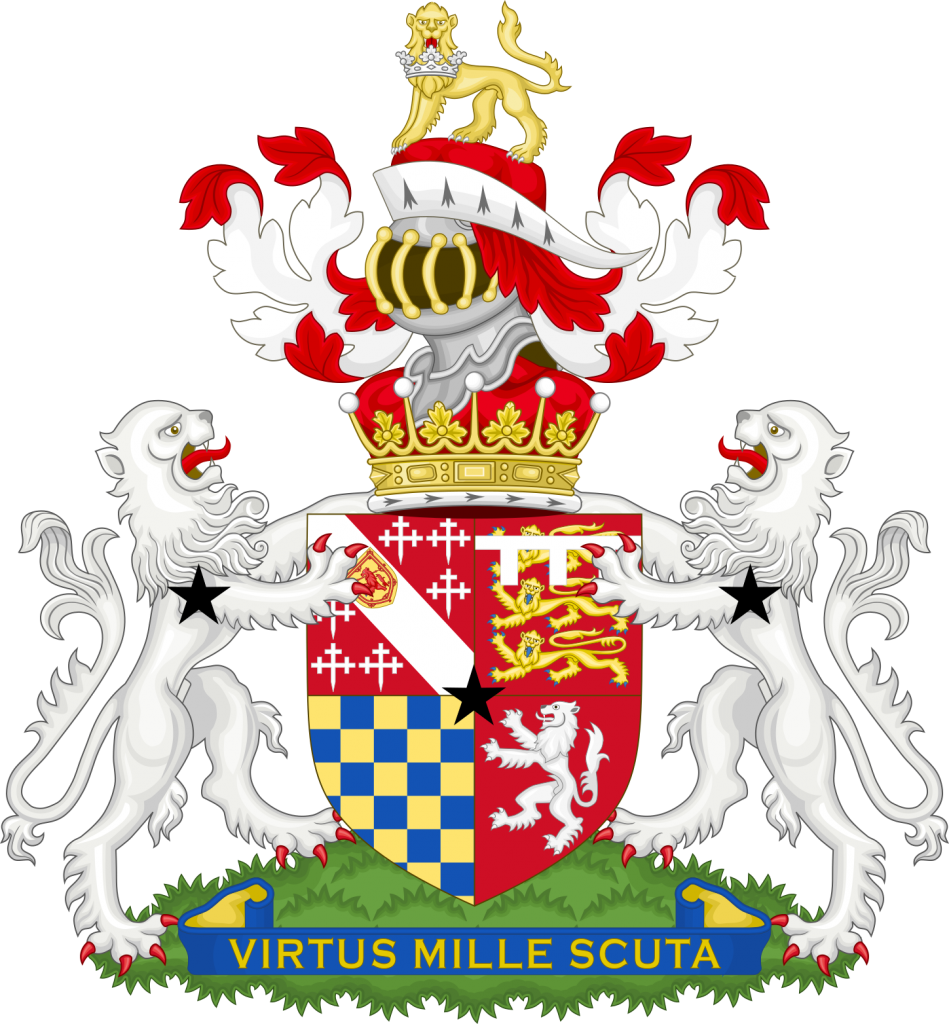Howard Family Tree
Lord William Howard, 1st Baron Howard of Effingham 1510-1573
Lord William, 1st Baron Howard of Effingham was the fourth son of Thomas Howard, the second Howard Duke of Norfolk and the oldest son by his second wife. He was born in about 1510 at the beginning of the reign of King Henry VIII, some four years before his father was reinstated as Duke of Norfolk. The dukedom had only been granted to the Howard family in 1483 by King Richard III because of their loyalty to him and their familial links to the Mowbrays who had been Dukes of Norfolk from 1397 to 1476 when they ran out of male heirs. John Howard, the first Howard Duke of Norfolk, died at the Battle of Bosworth in 1485 fighting for Richard III and King Henry VII then confiscated the dukedom and the family’s lands, imprisoning his heir, Thomas Howard, Lord William’s father. After being released from The Tower in 1487 Thomas Howard had to prove his loyalty to the new regime by fighting for Henry VII before being reinstated as the second Duke of Norfolk in 1514. Lord William and his family had to continue to navigate political and religious turmoil and changes to survive the Tudor period.
The Howard family’s lands mainly lay in Norfolk, but they also held lands in Surrey which they had inherited from another noble family to which they were related, but which had had no male heirs. Lord William was thought to have spent much of his childhood at Reigate Castle, the family’s home in Surrey, before attending Cambridge University.
When Lord William came of age his father gave him some property and land which were to be his for his life only, after which they would revert to the dukedom. These included the manor of Little Bookham in Surrey and also Bidlington in Sussex. These had only been inherited by the dukedom in 1498. As far as is known Lord William never lived at Little Bookham but always let the manor and estate out, which was said to provide him with a modest income of £21 per year.
Lord William was presented by his father at Court, as this was how men of noble birth could make their way, by serving the king. Lord William became trusted by King Henry VIII as a soldier, diplomat and envoy. Between 1536 and 1541 Henry VIII dissolved the monasteries after he renounced the Roman Catholic faith and made himself head of the English Church in order to divorce Queen Katherine and marry Anne Boleyn. This gave Henry VIII a huge supply of lands to add to his own wealth but also to placate his noble subjects over his religious policies. Lord William, being a junior courtier, received only a modest grant of lands in March 1538 which included the former property of Barnstaple Abbey in Devon and the lands associated with the parish church of Tottenham which had formerly belonged to the Priory of Holy Trinity, London. However, the Dean and Chapter of St Paul’s Cathedral wanted the Tottenham property and in June 1541 Lord William relinquished it. He received instead Reigate Priory which was more valuable to him as it was close to his childhood home. The grant included the lands held by the priory in many Surrey towns and villages – Reigate, Dorking, Horley, Betchworth, Gatton, Capel, Westhumble, Fetcham, Leatherhead, Nutfield, Lingfield, Buckland, Leigh, Burstow, Headley, Ashtead, Walton-on-the–Hill and Horne and some land in Sussex. This grant would cement Lord William’s ties to Surrey as it would become the family seat of the cadet branch of the family he founded.
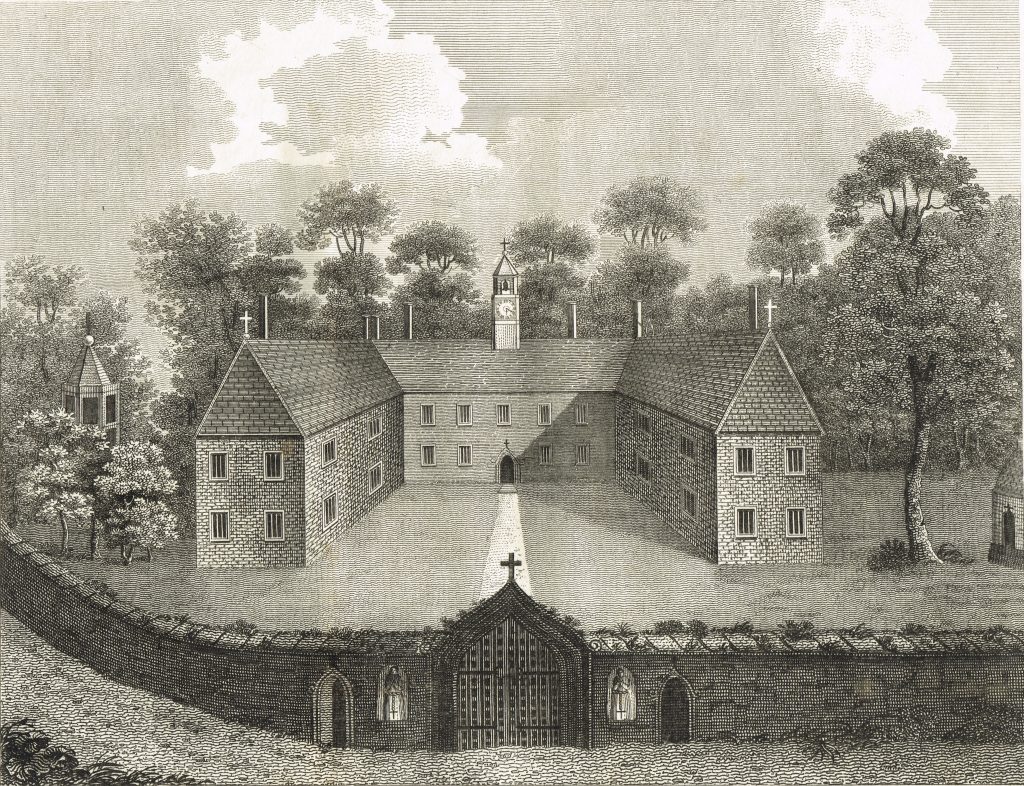
A few months after receiving the grant, in the autumn of 1541, Lord William’s half niece, Catherine Howard, who was Henry VIII’s fifth wife, was accused of adultery and imprisoned in the Tower before being executed in February 1542. Lord William was condemned to perpetual imprisonment in The Tower and all his lands and possessions confiscated, on the grounds that he had known of her pre-marital sexual relationships when Catherine was a teenager under the charge of his mother, the Dowager Duchess of Norfolk, Lord William’s mother.
Lord William was pardoned by the King on 28th August 1542 but his lands were only restored by a Royal Grant to him nearly two years later on 17th March 1544 after his renewed successful service to the King. Lord William then continued to turn the former Reigate Priory into his main country seat which it would be for the rest of his life and it was at Reigate Church that he was buried. He became a Surrey based nobleman, representing Surrey at Court, being appointed a Commissioner of the Peace for Surrey in 1547, Lord Lieutenant of Surrey and the Borough of Southwark in 1559 and Custos Rotulorum of Surrey in 1561.
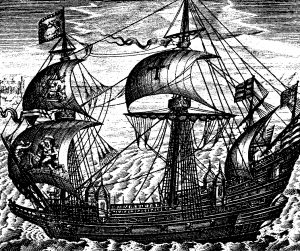
Lord William’s career also continued its upward progression at Court after his pardon. He fought under his half-brother, the 3rd Duke of Norfolk, for the King at the siege of Edinburgh and Boulogne in 1544. In 1545 he was appointed Vice-Admiral of the Royal fleet. His father the 2nd Duke had been Lord Admiral as had two of his deceased older half-brothers, with the position almost becoming a family appointment. The Howard family had extensive interests in shipping. In 1547 his career almost ended for a second time when his half-nephew, Henry Howard, Earl of Surrey, heir to the Duke of Norfolk, was convicted of usurpation of the royal arms and conspiracy against the crown and executed. Lord William’s half-brother, Thomas Howard, 3rd Duke of Norfolk, father of the Earl of Surrey, was attainted and imprisoned in the Tower with his lands reverting to the King. Their downfall was partly due to the arrogance of the Earl of Surrey, but it was also part of a power tussle between the old nobility (many of whom, like the Howards, had remained Catholic) and the “new men” or reformers, who were strongly protestant. Lord William seemed to avoid being involved in his family’s downfall because of the affection of the King and the relationship he had forged with one of the leading “new men”, John Dudley, who was Lord Admiral when Lord William was Vice-Admiral. When Henry VIII died and King Edward VI, a strong protestant, took the throne Lord William’s father remained in The Tower, but Lord William continued in the new King’s service and supported John Dudley’s coup to take over as the young King’s chief adviser.
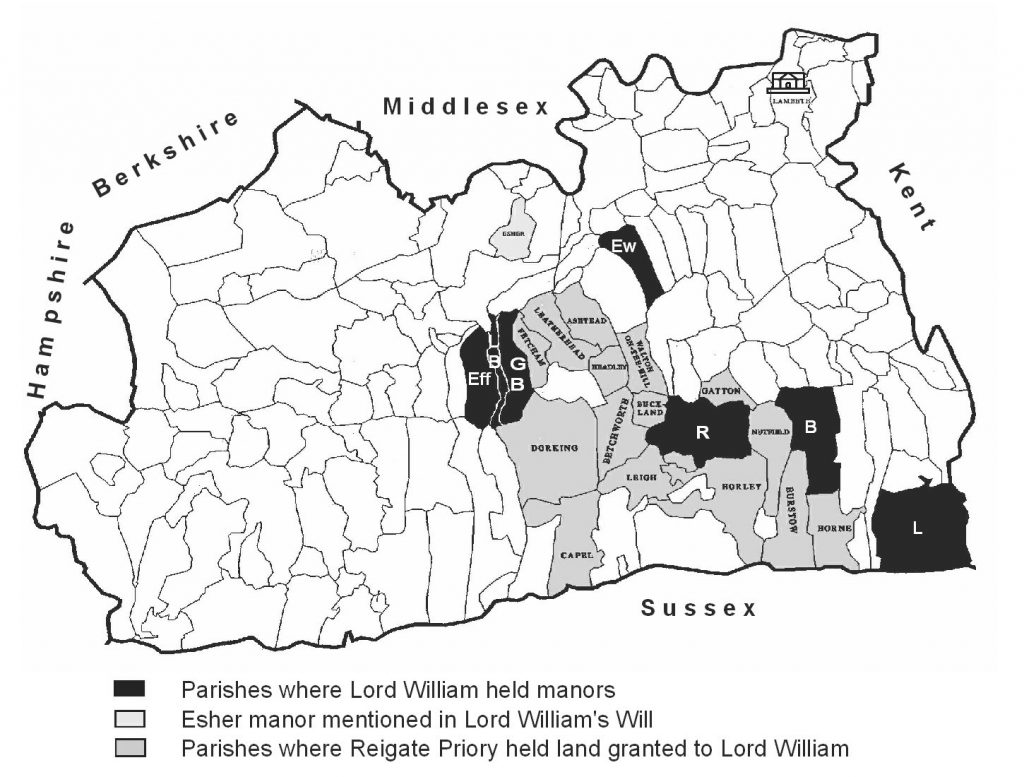
B=Bletchingley, Eff=Effingham, Ew=Ewell, GB=Great Bookham, L=Lingfield, LB=Little Bookham, R=Reigate
In recognition of his support, in March 1550, Lord William received a grant of lands which included the manor of Effingham and approximately 228 acres of land which formed the manorial estate. He also received the manor of Great Bookham and its estate, which had previously been held by the dissolved Abbey of Chertsey, and lands from a half share of the manor of Reigate that had been confiscated from his half- brother, the Duke of Norfolk, who was still in The Tower. The grant of the Reigate lands added to the Reigate Priory lands Lord William already owned gave him a good sized estate in Reigate and he was able to create a park of 200 acres, an essential adjunct to any nobleman’s seat, to surround his seat of Reigate Priory. He also now had a second Surrey estate within 10 miles of his Reigate seat at Effingham, Little Bookham and Great Bookham in excess of 400 acres. There is no evidence he ever lived in any of the three manors, although he is likely to have visited them as he used them to provide income. In 1553, Edward VI gave Lord William the reversion of the lands he had originally been given for life by his father, the Duke of Norfolk, which included Little Bookham ie. he was now able to pass them on to his heirs.

In her book, The History of Effingham for The Women’s Institute, Monica O’Connor asserted that the Effingham lands Lord William was granted had belonged to Chertsey Abbey in the same way as the manor of Great Bookham had and quoted an original document at The Surrey History Centre as evidence. Unfortunately, only part of the document, which is in a mixture of Latin and English, was transcribed for the book. The complete transcription supported by other original documents, including the actual record of the grant in the Crown’s papers which has now been located, shows that the Effingham manor and lands Lord William was granted had been purchased by Henry VIII from a knight called John Leigh in 1543, who in turn had bought them from John and Joanna Down in 1491 and neither had held them from Chertsey Abbey.
The Surrey History Centre document provides interesting details about the Effingham lands. It reveals that the 228 acres belonging to the lord of the manor of Effingham were organised into five farms which were let out to four yeomen called Laurence Attwood, William Parre, William Findon and William Cooke, whose families all feature in the early St Lawrence Parish Records. These farms would not have been self-contained enclosed farms with their own farm houses built on them as we think of farms today The farm land would have been spread throughout the parish with 52 acres of it spread though the Effingham Open Fields (sometimes called common fields although the two terms are not interchangeable. Most of the yeomen’s farm houses would have been in the village centre close to the open fields. The open fields were situated along the south side of what is now the A246 running roughly from Woodlands Road in the east to Warren Farm in the west. There were also some open fields to the south of the road east of the traffic lights and possibly on part of the current King George V Playing Fields. Open fields (so called as the land was not fenced or hedged) were an ancient system of landholding where the land was divided into strips owned by a number of different villagers, with each person’s strips generally being scattered around the fields to share the different types of land. The system varied throughout the country. The Effingham and Surrey fields had fixed owners for each strip who were generally able to grow what they chose as long as they obeyed the rules or “customs of the manor.” They were also allowed to pass on their land to their heirs or to sell it, unlike in some other parts of the country. The Effingham Open Fields were also shared with the other Effingham manors of which there were three at this time. The manor Lord William owned was actually an amalgamation of two medieval manors – Effingham La Place and Effingham La Leigh, but it was not the largest or most important manor. This was Effingham East Court which also had judicial functions. The third manor was owned by the Crown and had become part of the Crown’s manor of Byfleet.
It was the next monarch, the Catholic Queen Mary, who awarded Lord William the Barony of Effingham. Edward VI had made him lord deputy and governor of Calais (then a Crown possession) and when Edward died Lord William held Calais for Mary Tudor, not Lady Jane Grey. This may not have just been political astuteness. Despite having been briefly attainted and imprisoned in The Tower and had his lands confiscated by Henry VIII, Lord William displayed consistent loyalty to him throughout his career and supported his decrees for his succession throughout his life. In February 1554, Lord William raised the City of London’s militia against the Wyatt Rebellion. In March 1554 he was rewarded with the Barony of Effingham and finally appointed Lord Admiral. It may appear surprising that Lord William was not awarded a barony of Reigate where his seat was. However, he only held part of the manor of Reigate and that part had belonged to the senior branch of his family. It was probably thought wiser to create a new barony for him from one of his other possessions. Effingham was likely to have been chosen as the old administrative unit of the half-hundred of Effingham covered his manors of Effingham, Great Bookham and Little Bookham.
One of his first duties as Lord Admiral was to defend the Spanish imperial fleet from the French in the Channel as King Philip II of Spain was brought across to marry Queen Mary, a marriage opposed by the French. This was ironic as his son would later lead the English fleet against the Armada sent by Philip II to invade England. Lord William only held the post of Lord Admiral for four years, as despite his Catholic Howard family background, he was never entirely trusted by Mary because of his protestant connections. The Lord Admiral role allowed its holder to build his wealth as he received 10% of prize cargoes from captured ships, but Lord William did not hold the role long enough to build his wealth.
When Elizabeth ascended the throne, she perhaps surprisingly did not reward him well even though she was related to him through her mother, Anne Boleyn and Lord William had protected her and defended her succession to the throne under Queen Mary at the cost to his own position. Queen Elizabeth I was known to be less generous in granting lands than the earlier Tudor monarchs. Those before her had distributed most of the land from the dissolution of the monasteries and as she was less inclined to confiscate lands from noble families, she had less land available to redistribute. There were suggestions that Lord William would be made an earl, but he had not acquired the wealth to support the honour, and indeed in 1556 had to ask his great half nephew, the Duke of Norfolk, who had been restored to his power and wealth by Elizabeth, to help him sort out his financial difficulties.
Elizabeth did appoint Lord William to her privy council and made him Lord Chamberlain. Dogged by ill health, in 1572 he was given the post of Lord Privy Seal instead which he held until his death in 1573 when he died in service at Hampton Court. He was buried in accordance with his will at St Mary Magdalene Church, Reigate in the family vault he had built.
Lord Charles Howard, 2nd Baron Howard of Effingham and 1st Earl of Nottingham 1536-1624
Lord Charles, Lord William’s heir, was his eldest son by his second wife. He spent part of his childhood with his second half-cousins, the children of the disgraced Earl of Surrey, at Reigate Castle under the tutelage of the protestant John Foxe, author of the “Book of Martyrs.” He spent some time in France at the court of the leading Huguenot or protestant noble there and sailed with his father when he was Lord Admiral. He followed his father as a courtier and diplomat and was favoured by Elizabeth because of his father and his reputed looks and charm.
After serving as an MP until his father’s death in 1573, he was made Knight of the Garter in 1575 and given his father’s position of Lord Chamberlain in 1583 and then Lord Admiral in 1585, an office he held until 1619.

Famous for having successfully commanded the fleet against the Spanish Armada in 1588, with the victory often being attributed to Sir Francis Drake and Lord Charles being seen only as a figure head, it is generally forgotten that it was Lord Charles’ decision to appoint Francis Drake and other experienced “sea dogs” to command the Queen’s ships although they were not considered socially suitable and it was he who pushed the Queen to take the Spanish threat of invasion seriously. Thereafter, he became very powerful and was made Earl of Nottingham (a title held by his remote Mowbray ancestors) on 22nd October 1597.
Lord Charles did not succeed to most of his father’s lands until 1581 on the death of his mother as his father had left them in dower to her ie for her life. This is thought to have included Effingham. His younger brother, Sir William, was left the manors of Great Bookham and Lingfield after the death of his mother and made Lingfield his family seat.
As an adult during his father’s lifetime, Lord Charles, when he was not at Court, mainly lived at the manor of Bletchingley in Surrey which had been bought by his father. His heir was baptised there. After his father’s death until his mother died he seems to have leased estates and even after he came into his inheritance on his mother’s death, instead of making Reigate Priory his main country seat he instead leased the manor of Haling from Elizabeth I in 1592 and it was there that he died in 1624. He was buried in the family vault at St Mary Magdalene Church, Reigate.
The End of Lord Charles’ Line and the Howard Earldom of Nottingham
Lord Charles was succeeded as 2nd Earl of Nottingham by his second son, Charles, his oldest son Lord William having died before him. Charles, 2nd Earl of Nottingham had no surviving children and was succeeded by his half-brother, also called Charles, as 3rd Earl of Nottingham. He also had no male heir and the title then became extinct. Neither Lord William nor the 2nd and 3rd Earl of Nottingham were powerful courtiers like their father and grandfather, but held public positions representing Surrey. Lord Charles, 2nd Earl of Nottingham’s fortune was largely disbursed before his death and his successors were unable to maintain the dignity the office required to become great statesmen. Lord Charles, 1st Earl of Nottingham had had to sell much of his lands before his death and the decision of the 3rd Earl to sell both the Reigate and the Effingham lands in 1641 and 1647 respectively appears to have been due to his straightened financial circumstances. Both Earls were buried in the family vault at St Mary Magdalene Church, Reigate.
The Howards of Eastwick and the Creation of the First Earldom of Effingham
The death of the 3rd Earl without male issue ended Lord Charles’ line. The Barony then passed to the heir of Sir William of Lingfield, the second son of Lord William who had inherited the manors of Great Bookham and Lingfield. His great grandson, Francis Howard, became the 5th Baron Effingham.
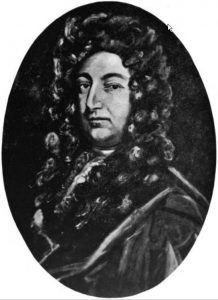 He was also a Governor of Virginia. This line of the family had their family seat at The College in Lingfield, a building endowed to the pre Reformation church and until 1725 they tended to be buried in the adjoining church, St Peter and St Paul. There are thirteen members of the Howard family known to be buried there. In 1626, Lord Francis’ grandfather, Sir Francis Howard, had bought the small manor of Eastwick in Great Bookham. This had a more habitable manor house than Great Bookham and from then on was used as an alternative family seat. After the death of her husband, Thomas Howard, 6th Baron Effingham in 1725 his widow, Elizabeth Howard, held Great Bookham in dower. She and her second husband Sir Conyers Darcy used the French Huguenot architect, Nicholas Dubois to build Eastwick Park between 1726 and 1728 and it then became the main family seat.
He was also a Governor of Virginia. This line of the family had their family seat at The College in Lingfield, a building endowed to the pre Reformation church and until 1725 they tended to be buried in the adjoining church, St Peter and St Paul. There are thirteen members of the Howard family known to be buried there. In 1626, Lord Francis’ grandfather, Sir Francis Howard, had bought the small manor of Eastwick in Great Bookham. This had a more habitable manor house than Great Bookham and from then on was used as an alternative family seat. After the death of her husband, Thomas Howard, 6th Baron Effingham in 1725 his widow, Elizabeth Howard, held Great Bookham in dower. She and her second husband Sir Conyers Darcy used the French Huguenot architect, Nicholas Dubois to build Eastwick Park between 1726 and 1728 and it then became the main family seat.
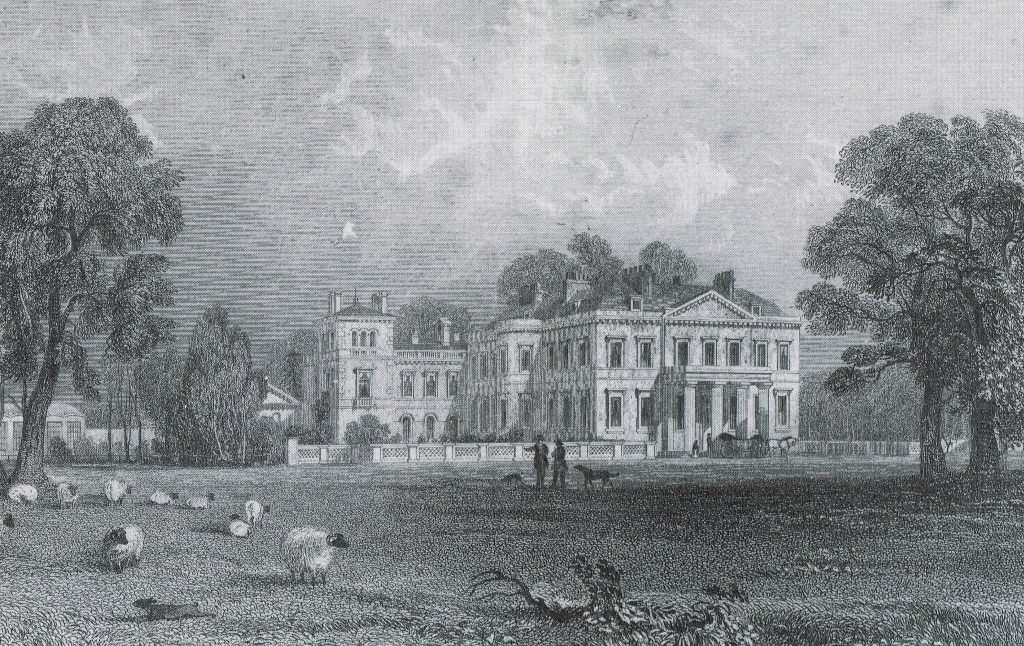
Thomas Howard, the 6th baron was succeeded by his brother, Francis Howard. He had a successful army career becoming a brigadier general in 1739. In 1731 he was created the 1st Earl of Effingham. He was also the first Baron Howard of Effingham to be buried at St Nicolas Church, Great Bookham in a family vault he probably had built. His family and successors were also buried there. In all there are believed to be 39 members of the Howard family buried at St Nicolas, sixteen of them in the family vault. Francis Howard’s son, Thomas, who succeeded him as 2nd Earl of Effingham and 8th Baron and his two grandsons, Thomas and Richard, who both succeeded to the titles but had no male heirs, were all successful army officers.
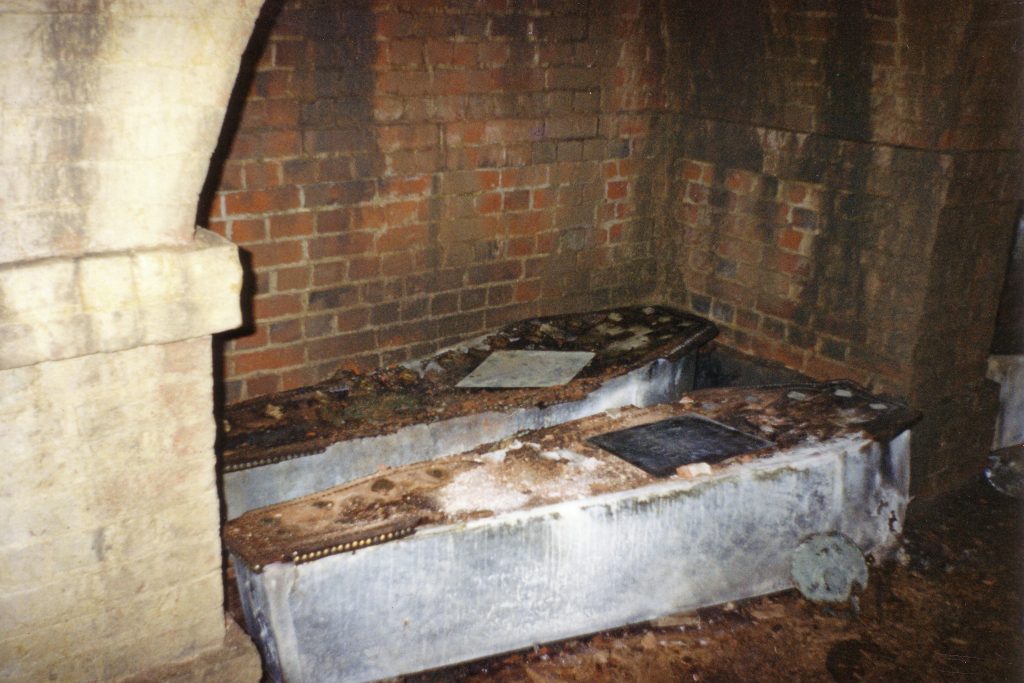
In the 1770s the family seat effectively moved to Rotherham in Yorkshire leading to the sale of Eastwick Park and the lands in Great Bookham in 1801 by Richard Howard the 4th Earl and 10th Baron. His brother Thomas, the 3rd Earl who moved the family seat to Rotherham was a colourful figure. He is known for his speech in the House of Lords in 1775 against the British declaration of war on its American colonists and resigning his commission in protest. As a result a number of places in the United States are named after him. As a young man he had eloped with a young woman from Leeds and set up home in a house he had inherited nearby. He then fought as a mercenary for Russia in the Russian Ottoman War. He built a new family seat called Thundercliffe Grange in Rotherham with the wealth he had acquired in Russia, but died in Jamaica after being made Governor. His brother, Richard, who succeeded him, was also an MP before succeeding to the titles and Secretary and Comptroller and then Treasurer to Queen Charlotte, the wife of King George III.
The Recreation of the Earldom of Effingham in 1837
The Barony of Effingham passed in 1816 to General Kenneth Alexander Howard, a third cousin of the last holder, although the earldom became extinct. General Kenneth Howard served with distinction in the Peninsula War and was made Lieutenant-General of Portsmouth. In 1837 the earldom of Effingham was re-created for him and he became the 1st Earl of Effingham. The family seat continued to be in Rotherham until the late nineteenth century when Thundercliffe Grange and all the other lands and property there were sold.
The current holder of the titles is David Peter Mowbray Algernon Howard, who is a four times grandson of General Kenneth, 1st Earl of Effingham and an eleven times grandson of Lord William Howard. He is the seventh Earl of Effingham and the 17th Baron Howard of Effingham. His family seat is in Essex.
Vivien White, 2020
